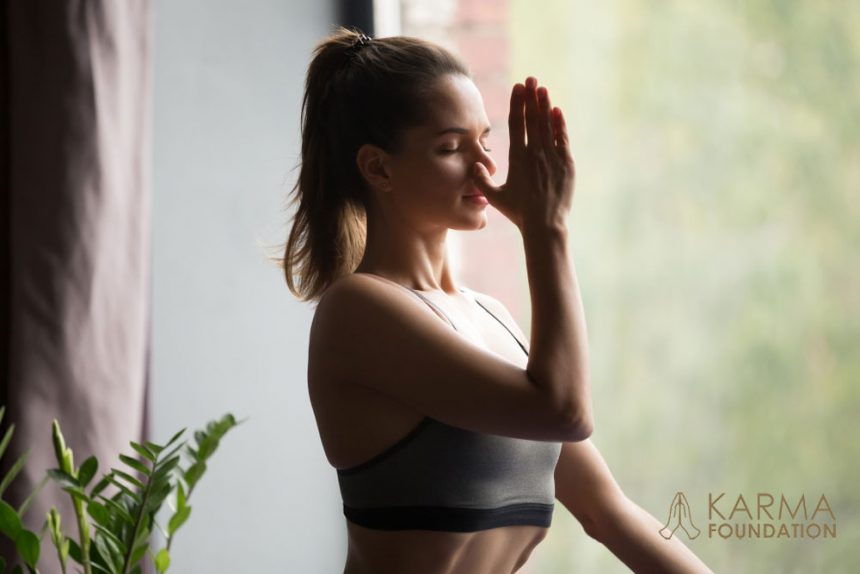Trying to get to sleep naturally and enjoying a healthy, blissful night’s sleep isn’t always easy – not for anyone. Life’s pressures and stresses always seem to get in the way, now and again. It’s nothing to worry about, in itself; so long as it does only happen occasionally. Yet, sometimes we really do need that good night’s sleep and when we can’t attain it, we truly wish there were something, anything, we could do to, well, drop off.
So, have you ever thought of trying sleep meditation? There are different techniques, of course, but one type is breathing exercises. The great thing about them is that they don’t just aid in calming your mind and relaxing your body, preparing it to naturally enter the Land of Nod, but they also serve as pretty potent self-healing tools, too – when combined with other sleep meditation methods.
Here are three such breathing techniques we advise giving a try…
Alternate nostril breathing

Nadi shodhana pranayama is what you might refer to as alternate nostril breathing and is often recommended by yoga and meditation experts. Why? Well, they believe it can deliver calming and even stress-relieving results, as well as aiding one to fall asleep, given it relaxes both mind and body (useful for sleep meditation, then, perhaps). Give it a go and see for yourself – here’s how to perform the technique:
- Sitting comfortably, close your right nostril with your right thumb, inhaling very slowly via the left nostril; then, closing the latter with your left hand’s ring finger, open the right nostril and exhale, in a slow, relaxed manner
- Now inhale via the right nostril again, before closing it with your thumb and opening the left nostril and exhale; again, in a slow, relaxed manner
- Next, inhale via the left nostril again, before closing it with your ring finger; then open the right nostril, slowly
- Finally, inhale through the right nostril again and close it with your thumb
- Repeat this cycle at least 10 times – doing so in a slow but gentle, rhythmic manner.
The Papworth Method
This breathing technique, some claim, can help decrease anxiety and asthma and maybe aid with dealing with symptoms of depression. Encouraging slow, deliberate nasal breathing from as low as the diaphragm, with an emphasis on using your nasal passages, the Papworth Method is rightly described as one of many meditation techniques anyone might try.
The technique calls on the breather to slowly draw in breath through the nose, before releasing it through pursed lips – as if blowing a candle out. Try to exhale for about double as long as your inhale and, as mentioned, breathe thoroughly using the diaphragm and abdomen.
The 4-7-8 breath
Finally, the third of our three breathing techniques that we believe can enhance other techniques of meditation for happiness and love, is a deep, rhythmic, pranayamic breathing method that’s often advised for moments of anxiety, stress, and frayed nerves, as well as to help induce healthy, natural sleep. Here’s how to perform this technique:
- Sit down and, once you’re settled, rest the tip of your tongue on the tissue just above your top front teeth
- Steadily empty your lungs of all the air they contain
- Calmly inhale through your nose for 4 seconds
- Hold the air now in your lungs for 7 seconds
- Now, pursing your lips, forcefully exhale through your mouth for 8 seconds – an audible exhale is fine
- Repeat this cycle at least 10 times.

